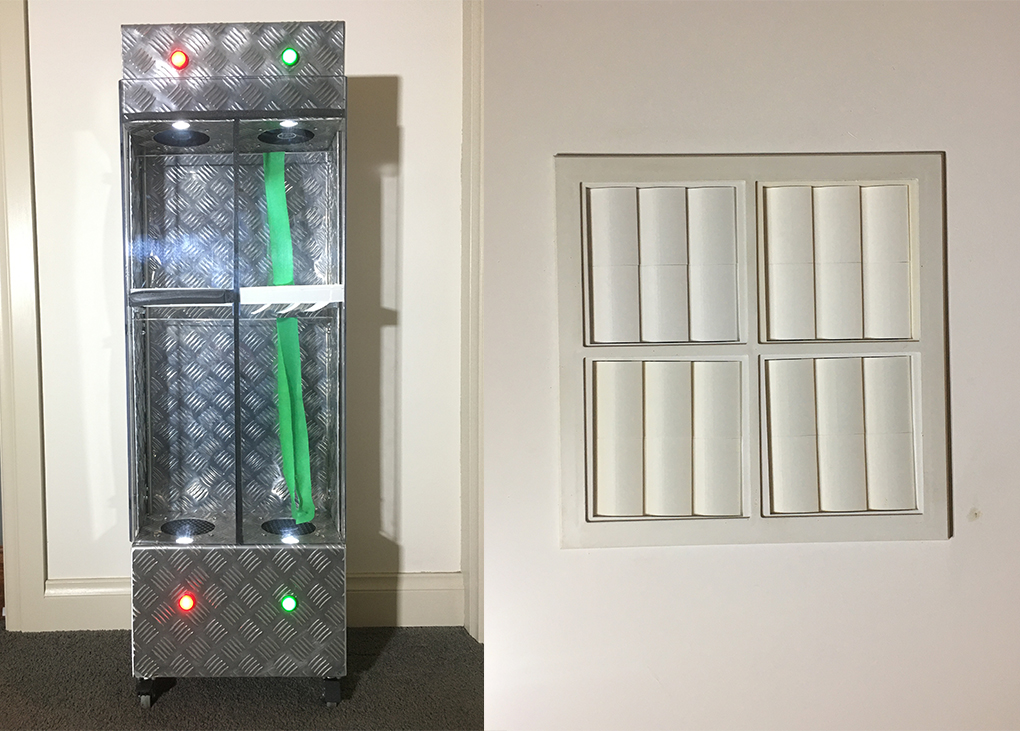Australian inventor Dean McGurgan, Affil.AIRAH, has developed a ducted ceiling vent that he claims can save on all forms of household heating loss from all types of ducted air conditioning systems – without the need for wires, batteries or apps.
Pending a licensing deal, McGurgan calls the as-yet unnamed product an “anti-gravity ducted ceiling vent”. It is designed to prevent hot air from escaping through ceiling vents and ductwork into other rooms that do not require heating. The goal is to optimise household heating and reduce the associated costs.
The idea came to McGurgan when the smoke of burnt popcorn triggered an asthma attack in his home. The vapours had travelled through the ceiling ducts from the stove to his bedroom, located one storey above and diagonally opposite the kitchen. That meant the zoning function of the ducted heating system had not been working as desired.
Running some tests with an electric heater, he found that due to hot air escaping through ducted ceiling vents, the unit failed to reach the thermostat level that activates its auto-off function. After wrapping his reverse cycle vents in cellophane sheets, the heater reached the thermostat level and turned off in under ten minutes.
Inspired by his findings, the full-time engineer devoted his spare time over the next three years to developing an automatic louvre system that is able to isolate different zones from each other.
The result is a drop-in replacement to fit current vent dimensions, with spacer plates available for other sizes. The self-installable device does not require power or plumbing.
The innovation essentially replaces the seasonal tasks of opening/closing adjustable evaporative and gas vents or wrapping/unwrapping its fixed counterparts.
“My product keeps you warmer for longer by shutting heat energy in like an esky, and it is suited to ducted reverse cycle, gas heating and evaporative cooling systems,” says McGurgan.
“It removes the twice yearly chores and related WHS issues, especially with accessing 12-foot ceilings. Other attributes include smoke and smell reduction as well as fire retardation. It should also inhibit a fire from drawing the oxygen through the ductwork, from another room.
“I have spoken with HIA (Housing Industry Association) and it was suggested that it could even change the future star rating of housing.”
To determine savings in power consumption, the Adelaide-based engineer compared the time durations it took to activate the thermostat of a three-phase air conditioner. With standard vents in place, the AC would turn on every 8 minutes.
With the anti-gravity ceiling vents installed, the reverse-cycle unit came on every 12-13 minutes, representing one-third savings in power consumption.
The invention won a People’s Choice Award under Flinders University’s Venture Dorm startup program in 2018. While still on the lookout for a manufacturing partner or licencing deal, McGurgan has set his sights further afield.
“First and foremost, I really wish for this product to be made in Australia to create Australian jobs and then be licensed out globally,” he says.
“As much as I would like to stay connected to this project, I can see a whole family of products unfolding from the domestic to the commercial and industrial.”
Pictured: (Left) An airflow demonstration cabinet built for the Flinders University startup program that shows how the vents automatically open and close as the air-conditioner starts and stops. (Right) The anti-gravity ceiling vent.



Leave a Reply to lyn Ogrady Cancel reply